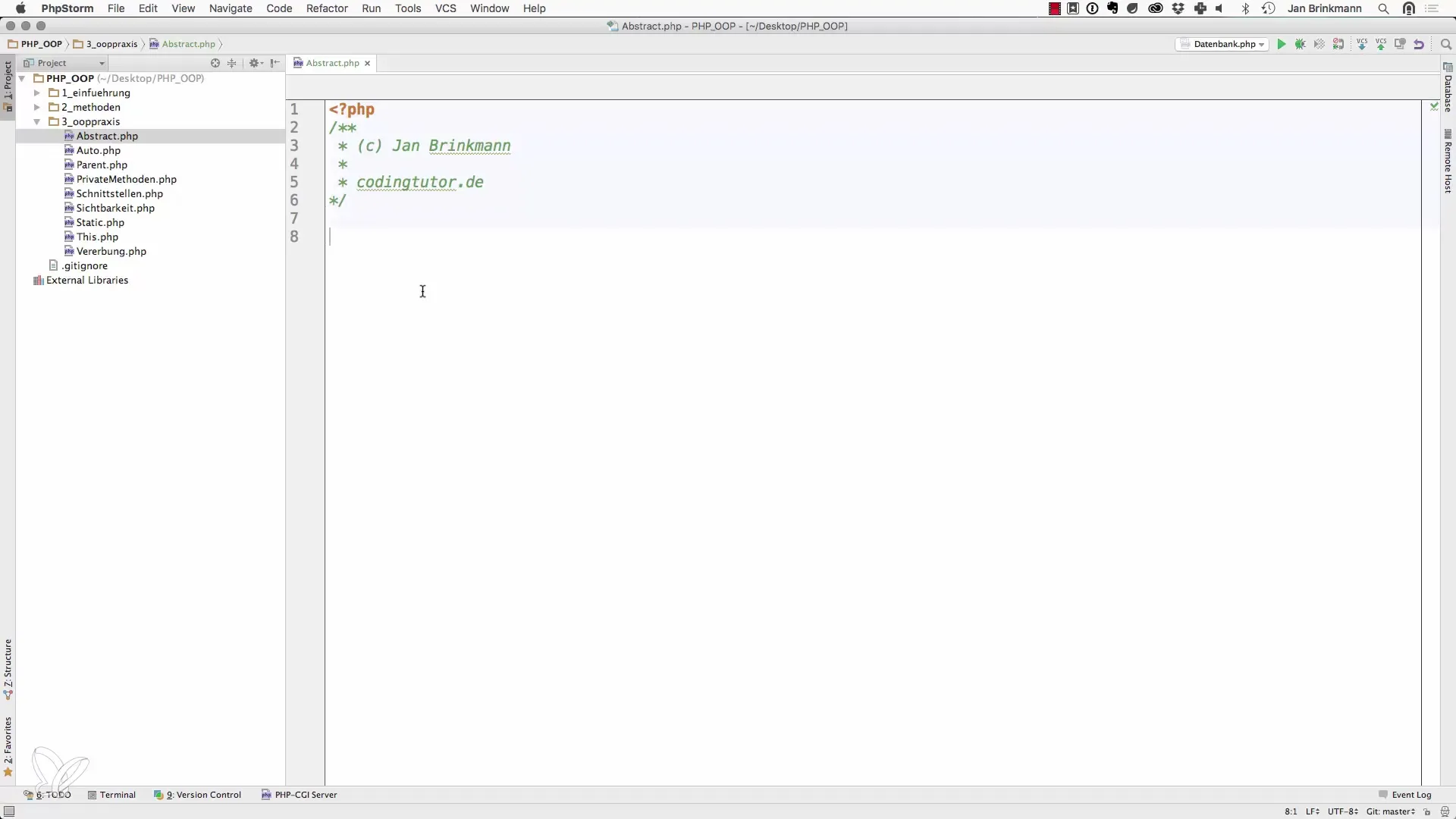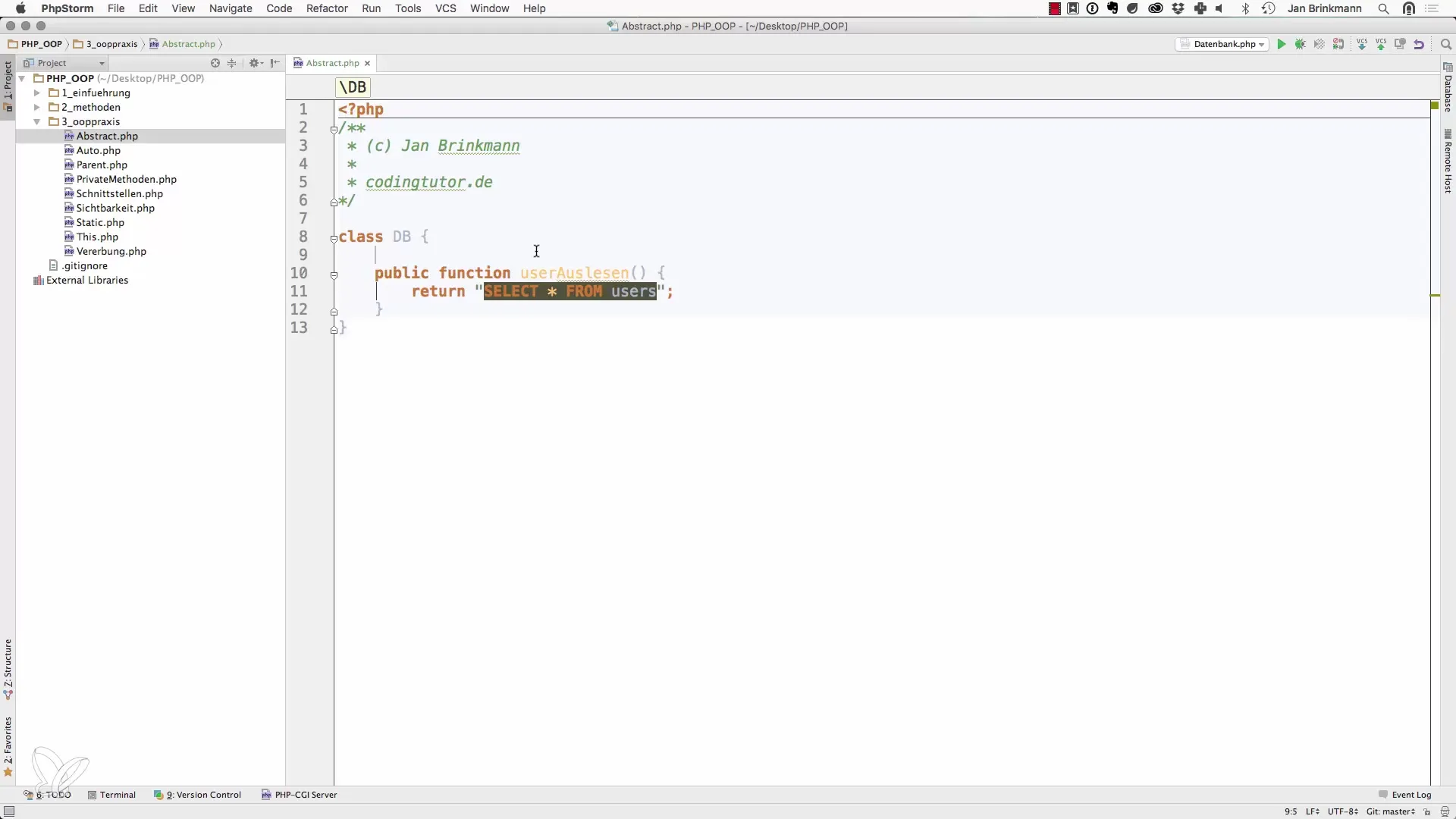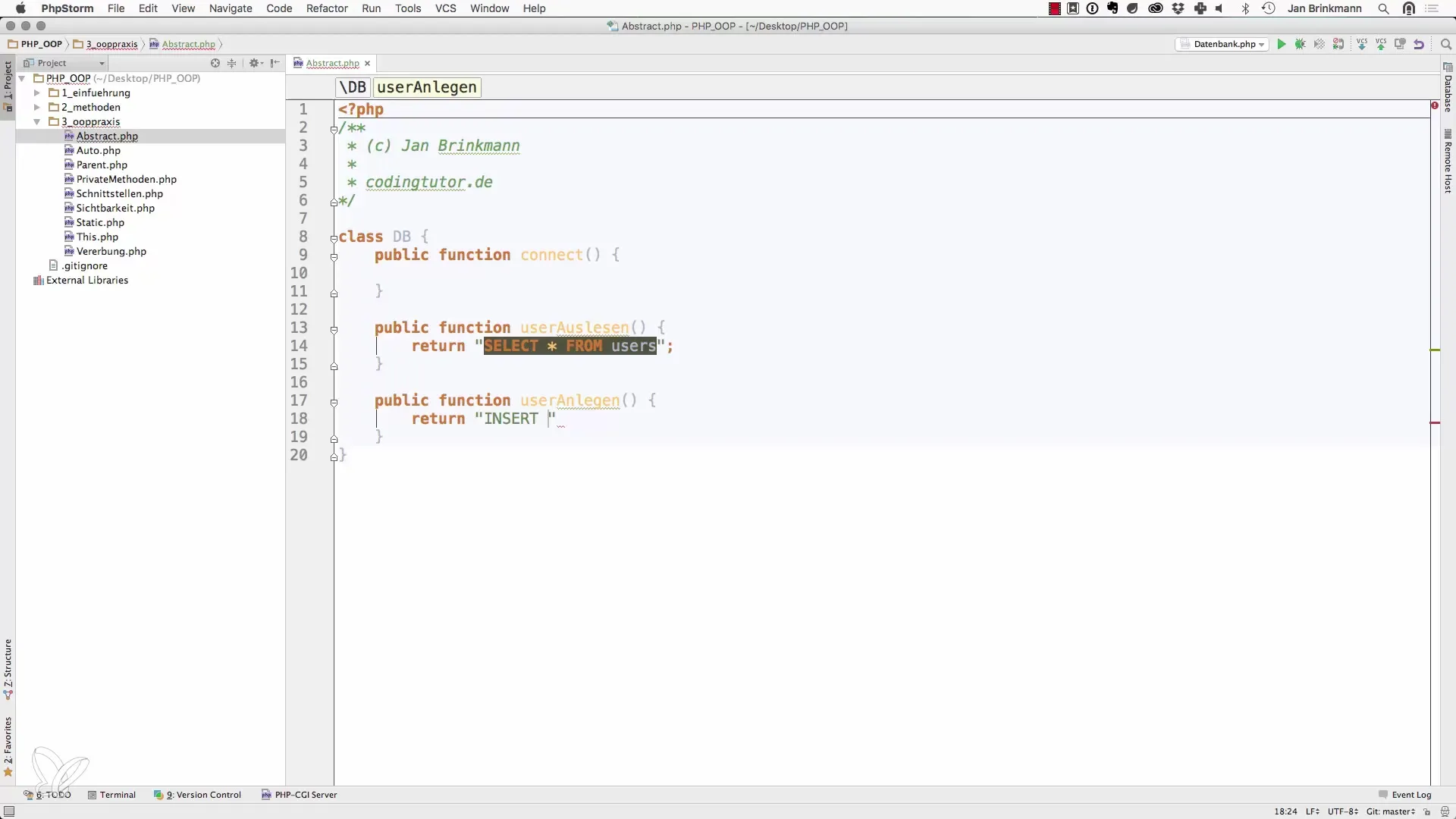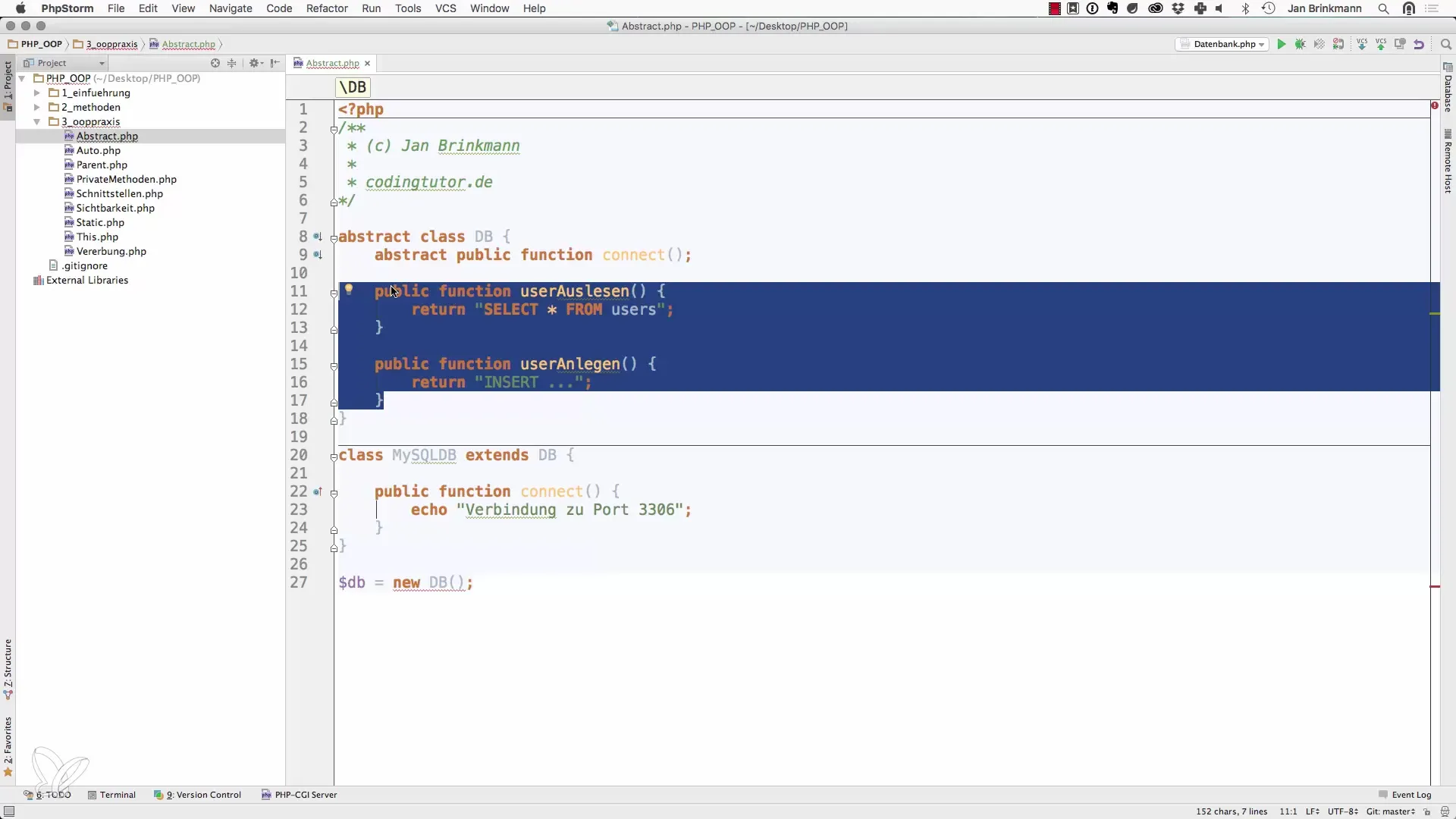Abstract classes and methods are fundamental principles of object-oriented programming that can help you effectively design the structure of your software architecture. In this tutorial, I want to introduce you to the concepts and show you how to implement them in PHP. Let’s dive into the details together and explore how you can use abstract classes to improve the flexibility and maintainability of your web applications.
Key Insights
- Abstract classes provide a base class that cannot be instantiated but serves as a template for other classes.
- Abstract methods define an interface without implementation, which must be specified in the derived classes.
- The use of abstract classes enables a structural organization of the code that increases reusability.
Step-by-Step Guide
1. Introduction to Abstract Classes
Abstract classes are especially useful when you want to define a common base for multiple classes. Let’s say you are working on an application that will perform database operations. You want to create a class that cannot be instantiated directly, but serves only as a basis for more specific database classes.

2. Defining an Abstract Class
Start by defining an abstract class, for example DB, which describes basic database functionalities.
Here you declare the class DB as abstract and define several abstract methods. These methods must be implemented in the derived classes.
3. Implementing Derived Classes
Now that your abstract class is defined, you can create a specific class that inherits from DB.
Here you implement the two abstract methods connect, readUser, and createUser that were declared in DB.
4. Why Use Abstract Methods?
It is important that you understand why abstract methods are beneficial in your design. An abstract method forces derived classes to provide their own logic while the common functionality is still managed in the abstract class. This not only simplifies the maintenance of your code but also ensures that core functions are present in all derived classes.

5. Advantages of Using Abstract Classes
One of the greatest strengths of abstract classes is the ability to promote code reuse and consistency in your project. This improves the quality of your code. By enforcing the implementation of specific methods in the derived classes, you can be sure that all necessary functions are present.

6. Abstracting Database Operations
Now you can use the abstract classes to establish connections to different databases by declaring different processes that are specific to each database. This gives you the flexibility to support various database systems without repeating your core logic.
7. Testing and Debugging
Thoroughly test your implementations by creating different instances of your derived classes and ensuring that the methods work correctly. This testing phase is crucial to ensure that all functionalities work as expected.

Summary – Abstract Classes and Methods in PHP: A Structured Guide
Abstract classes and methods are essential for effectively structuring code in object-oriented programming with PHP. They help you write clean, maintainable, and flexible code. It is crucial to understand their concepts and know when and how to use them. Use the principles you have learned to make your web applications more robust and optimized.
Frequently Asked Questions
What is the difference between an abstract class and an interface?An abstract class can contain implementations, while an interface only defines method signatures.
When should I use an abstract class?Use an abstract class when you want to provide shared functionality that can be used by different classes.
Can I inherit multiple abstract classes from one class?No, PHP does not support multiple inheritance. A class can only inherit from one abstract class.
What happens if I do not implement an abstract method?If you do not implement an abstract method in a derived class, you will receive an error.
How can I achieve polymorphic behavior in abstract classes?Define methods in the abstract class and implement them in derived classes to achieve different behaviors.


